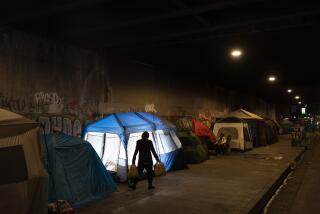Reading Los Angeles: Better to pre-habilitate children than rehabilitate killers
There is an old story about a political pollster who asked in a telephone survey, “What is the bigger problem in America today, ignorance or apathy?” Just before slamming the phone down, one irritated respondent replied emphatically, “I don’t know and I don’t care.”
That same level of disregard characterizes how many Americans feel about the high rate of homicide in black communities. They don’t know exactly why it is so, nor do they really care.
Criminologists have long known and indeed cared about the black homicide problem, a concern shared and skillfully illuminated by Jill Leovy in “Ghettoside” within the context of homicide in South Los Angeles. Over half the murders in this country are committed by blacks, a rate nearly eight times higher than that among whites, when compared with their respective population shares. Even worse, black males aged 14-24 commit over one-quarter of the nation’s homicides yet constitute only slightly more than 1% of the U.S. population.
The fact that the overwhelming majority (over 80%) of people killed by black assailants are also black and that a majority of homicide victims have prior criminal records allows countless Americans to distance themselves psychologically and politically from the problem. Of course, when murders do occasionally cross racial lines and claim the lives of white victims, the screams of outrage can be deafening.
The persistent and perplexing problem of black homicide can largely be traced to what sociologist Eli Anderson has termed the “Code of the Street” in which violence is an encouraged and expected response to both physical and verbal affronts. For gang members and gang wannabes in particular, the willingness and readiness to kill represents the path to earning and maintaining respect, the most highly valued form of street capital. This helps to explain why in California, for example, over 40% of homicides perpetrated by young black males are gang-related. In Los Angeles, it is as high as two-thirds.
Notwithstanding all the negatives, there are actually many powerful functions served by gang affiliation. By joining a gang, a young person can feel special and important, particularly when praised by gang leaders for toughness and loyalty. Gang membership is also a source of excitement and profit. More importantly, unlike conventional avenues to success through school and career, a recruit can rise to a leadership position in the gang, regardless of skin color or educational background. For these reasons, gangs are attractive to black youth, especially when the economy is tight and job prospects limited.
It is popular to blame parents – especially absent fathers – in black families for not providing their children with adequate direction and supervision. However, most parents are well-meaning, and would like to have a greater role in the children’s socialization. Unfortunately, their best efforts in parenting and as role models are often overshadowed by competing negative influences of the street.
We need to assist parents, not assail them, by promoting quality day care and family support programs. As a society, we also need to do a better job of providing access to opportunities that are as attractive and realistic as what neighborhood gangs can offer. We need to invest in disadvantaged youth through increased funding for preschool enrichment programs like Head Start, for after-school programs like the Boys and Girls Clubs, and for urban schools. These initiatives have been shown to help prevent kids from getting involved in gangs, drugs and crime.
As always, an ounce of prevention is worth a pound of prison time. It is better that we pre-habilitate children when they are still young and impressionable, rather than try to rehabilitate them later after the damage is done.
James Alan Fox is the Lipman Professor of Criminology, Law and Public Policy at Northeastern University in Boston, and author of “The Will to Kill: Making Sense of Senseless Murder.”
More to Read
A cure for the common opinion
Get thought-provoking perspectives with our weekly newsletter.
You may occasionally receive promotional content from the Los Angeles Times.










